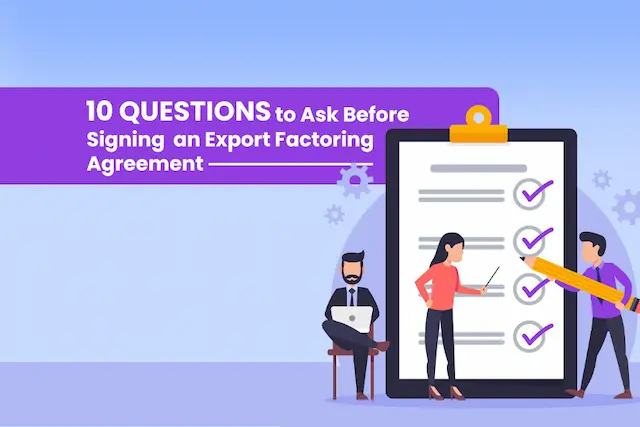Every business needs a steady cash flow for survival and growth. This is where trade finance tools like factoring come into play. There are various types of factoring, and you may wonder what is best for your business. In this article, let us discuss the difference between reverse factoring and traditional factoring.
What is Traditional Factoring?
Traditional factoring is a financial service in which businesses sell unpaid customer invoices to a third party called a factor at a discounted price. This allows businesses to use the money immediately since they do not wait for settlement terms to be due.
Companies frequently employ it to optimize the working capital and maintain immediate funds for such expenditures as salaries, raw materials, or production costs. Companies will not have to suffer the strain of delayed receivables by turning their invoices into cash within a very short period.
How Reverse Factoring Works
On the other hand, reverse factoring is initiated by the buyer, which is also known as supply chain financing. In this case, a buyer collaborates with the financier to pay early, while the buyer gets more time to pay the financier.
The method is more suitable for very big buyers with good credit standings, as they can successfully bargain for the financing. This, in turn, strengthens buyers and sellers ‘bonds and also ensures that production and delivery schedules are consistent.
The Key Force That Differentiates Both Models
Both methods aim to speed cash flow; the main difference lies in the party initiating the transaction. In traditional factoring, it’s the supplier who initiates; in reverse factoring, it is the buyer. This difference is instrumental when deciding which of the two business models will fit best in your business operations.
In the setup of reverse factoring, suppliers can benefit from the buyer’s good credit rating. In contrast, traditional factoring sees suppliers paying the higher rates due to their own credit risk.
What Businesses Should Utilize Traditional Factoring?
Traditional factoring often enters the picture for small and medium-sized businesses suffering delayed payments from customers. It is a life-saving option for such entities in times when tight cash flow and long payment terms dominate. It’s widely used among exporters and suppliers dealing with disparate clients and having little access to credit.
Yet, this form of financing is more expensive, and could harm your relationships with customers if the factor is aggressive in collecting debts.
When Reverse Factoring Makes More Sense
On the other hand, reverse factoring is more useful to the large firms, provided they have a strong balance sheet. It also allows them to provide support to their suppliers in the form of quicker payment that does not necessarily involve their own money being tied up. This strategy aids in effective management of the supply chain and it results in better supplier dealings.
Reverse factoring is being slowly accepted by companies in retail, electronics, and the car industry, whose supply chain security cannot be forsaken.
Costs and Risks Involved
There are always costs and risks associated with both factoring types, and they are both financial services. Conventional factoring can be costly since it has more mature processes and entails high supplier credit risk. Reverse factoring has lower costs than standard factoring, but is not available to any buyer with a low credit score.
However, factoring agreements might contain hidden costs, and if not managed properly, they might harm the supplier or customer relationship. There is a need to specify terms and conditions when venturing into any business agreement.
The Importance of Credit Assessment
One of the critical elements that has to be considered when selecting the right model is your balance sheet and business credit profile. Unlike modern factoring, traditional factoring relies more on the credit value of the customer. In reverse factoring, the financier evaluates the financial capacity of the buyer, which is convenient for buyers with decent creditworthiness.
It means that smaller organizations that may have a less-than-perfect credit rating can more easily secure funding through traditional factoring.
Making the Right Choice for Your Business
Factoring does not offer one solution that can be implemented for all organizations, no matter the type of business. The criterion for your choice will depend on the nature of your business, such as its scale, specialty, who your major clients are, and cash flow requirements. Analyze your operational concerns and your organizational cash deficiencies carefully.
If your single biggest problem is delayed payments and the buyers are dispersed, traditional factoring may be best for you. Reverse factoring is useful where the buyer has some power and wishes to further develop relationships with the supplier and improve their cash flow.
Choose What Fits Your Strategy
Reverse factoring and traditional factoring services are two-way strategies that provide business advantages; your choice should depend on the business specifics. In traditional factoring, the suppliers are in control of the receivables, whereas in reverse factoring, the buyers have the power to manage the supply chain. When you compare both models and evaluate factors linked to the cost, eligibility, and relationships, you will know what decision is suitable for your growth.
In the current volatile and highly competitive global trade environment, what enterprises require is dynamic financing. Credlix comes up with an intelligent solution with invoice discounting and supply chain finance– the opportunity for exporters, suppliers, and other MSMEs. Whether it is waiting for a large payment or attempting to bridge cash flow gaps, Credlix secures working capital faster without collateral. With quick disbursal, easy onboarding, and complete GST compliance, Credlix makes it easier for businesses to focus on growth, not delays.





